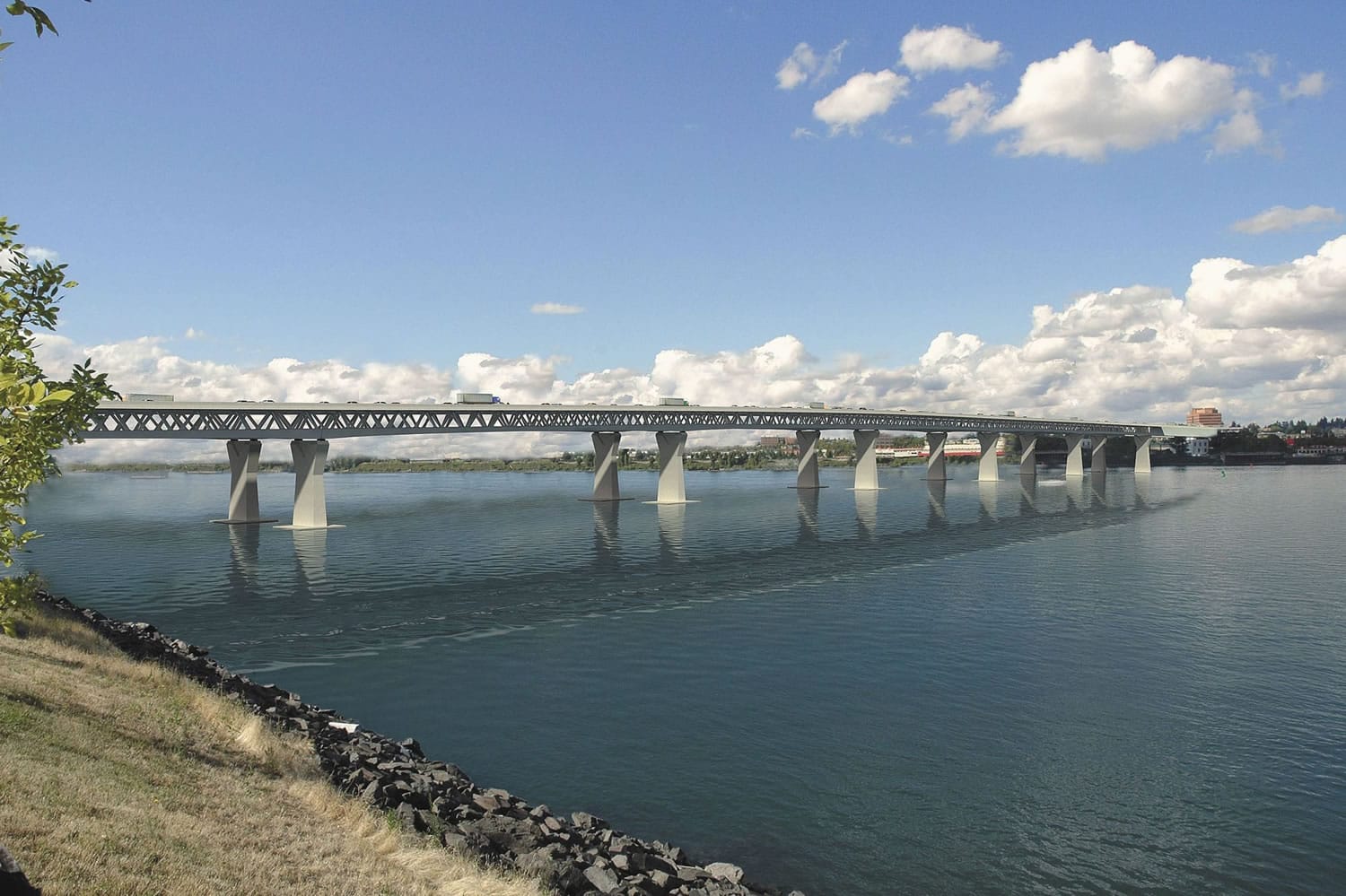Columbia River Crossing planners made several key changes to the project’s environmental plans before sending them to federal authorities last week, but opted to wait on at least one other matter — updating traffic forecasts that remain overinflated.
The numbers used in the CRC’s sprawling Final Environmental Impact Statement don’t reflect the full brunt of a recession that took thousands of cars off of Interstate 5 daily. That drop came after traffic volumes had already started to level off during the last decade.
Those counts have big implications for the megaproject that will replace the Interstate 5 Bridge, bring light rail to downtown Vancouver and make other freeway changes on both sides of the Columbia River. About a third of the price tag — estimated at $3.1 billion to $3.5 billion — is expected to come from tolling likely to begin in 2014.
But for now, CRC planners will move ahead without a clear idea of what kind of traffic they’ll be handling right away. The CRC’s forecasts may not be updated again until 2013, when the project is supposed to break ground, according to CRC spokeswoman Anne Pressentin.
“We’re looking for very much the long horizon,” Pressentin said. Even if traffic counts don’t climb as soon as originally projected, she said, “it doesn’t mean that it’s not going to happen.”
Another key question: How much of that traffic will steer clear of I-5 once tolling starts? That answer will also wait until 2013 — and with good reason, said Andy Cotugno, policy adviser with the Portland area’s Metro government. When CRC planners go to borrow money for the project, they’ll need to do so with the most current data possible before tolls pay it back, he said.
“You don’t want to do the investment-grade toll analysis until you’re ready to sell the bonds,” Cotugno said, noting those numbers would mean little a year or two in advance of actually borrowing. “You could never sell bonds on that kind of stale information. You do it right before.”
A recent study of Seattle’s state Highway 520 bridge found that tolls could reduce traffic counts by half as drivers divert to nearby Interstate 90. In the CRC’s case, motorists would likely head for a toll-free Glenn Jackson Bridge on Interstate 205.
Freeway traffic counts are typically gathered by the Oregon and Washington departments of transportation. Local forecasting and modeling is handled by Metro and the Southwest Washington Regional Transportation Council.
That becomes a never-ending process as conditions change. Metro is scheduled to have its next traffic forecasts finished by the spring, said Cotugno, also Metro’s CRC liaison. Another year beyond that, Metro will have a more detailed report incorporating surveys being taken now, he said.
When the CRC completes its tolling analysis in 2013, planners will request the information needed, Pressentin said.
CRC Director Nancy Boyd said last week that leaving older, higher traffic projections in the environmental impact statement are a better reflection of the project’s highest possible impact. Those models will receive additional scrutiny when the tolling analysis happens in 2013, Pressentin said.
“Investment-grade analyses are, by necessity, conservative related to traffic levels,” she said.
Traffic on both freeways between Vancouver and Portland dropped during the recession. Predicting future trends is always a guessing game to some extent, but one recent report suggests that steady growth might be a thing of the past for good.
The Seattle-based Sightline Institute found that gas consumption in Washington and Oregon has basically flatlined since 1999. Traffic volume has followed largely the same pattern, but leveled off a few years later, said Clark Williams-Derry, the study’s author.
Both trends could spell trouble for construction projects that rely on gas tax or toll revenues for funding, he said.
“That creates a huge problem for highway financing in general,” Williams-Derry said. “If the gas consumption is going away … it puts a premium on tolls.”
Traffic volume is similarly stagnant on I-5. How it rebounds from the recession will depend largely on employment levels on both sides of the river — and which side does better.
If Clark County continues to struggle with double-digit unemployment, residents may end up battling Interstate 5 Bridge traffic to find work, Cotugno said. Population growth in the region hasn’t slowed much, he said.
“They’ve got to go somewhere to get to work,” Cotugno said.
Of course, there’s much more than economics at play. Williams-Derry said demographics have a lot to do with the recent slowdown in traffic volumes. Younger generations tend to drive less than their older counterparts, he said, instead choosing other options. The aging baby boomer generation accounts for fewer and fewer motorists each year, he added.
All of those factors have likely contributed some to stagnant traffic counts on I-5, Williams-Derry said. Whether that shifts remains to be seen. But the Northwest’s major corridor isn’t alone in that trend, he said.
“Projections are always for more and more growth,” Williams-Derry said. “But it hasn’t been showing up.”
Eric Florip: 360-735-4541 or eric.florip@columbian.com.




